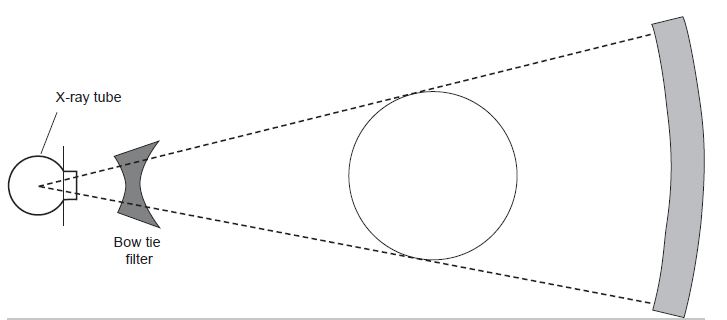CT Filtration
Jump to navigation
Jump to search
Compensating filtersare used to shape the x-ray beam.
They reduce the radiation dose to the patient and help to
minimize image artifact. Radiation
emitted by CT x-ray tubes ispoly-chromatic. Filtering
the x-ray beam helps to reduce the range of x-ray energies
that reach the patient by removing the long-wavelength
(or “soft”) x-rays. These long-wavelength x-rays are readily
absorbed by the patient, therefore they do not contribute
to the CT image but do contribute to the radiation dose
to the patient. In addition, creating a more uniform beam
intensity improves the CT image by reducing artifacts that
result from beam hardening.
Different filters are used when scanning the body than
when scanning the head. Human body anatomy typically
has a round cross section that is thicker in the middle than
in the periphery. Hence, body-scanning filters are used to
reduce the beam intensity at the periphery of the beam,
corresponding to the thinner areas of a patient’s anatomy.
Because of their shape they are often referred to as bowtie filters.
